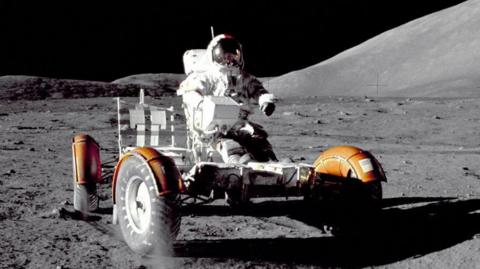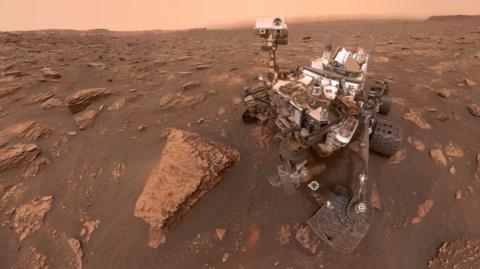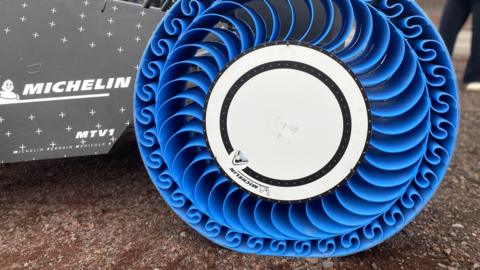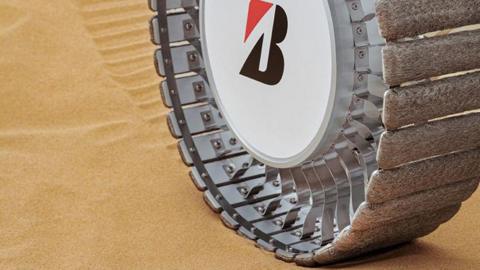Going back to the Moon after half a century, and then to Mars, literally means reinventing the wheel.
After all, Mars is a long way to come back if you get a flat.
"One thing you cannot have is a puncture," says Florent Menegaux, chief executive of the French tyre-maker Michelin.
The tough conditions on Mars have been underlined by the experience of the unmanned Curiosity rover.
Just a year after landing in 2012, its six rigid aluminium tyres were visibly ripped through with punctures and tears.
As for the Moon, the US Artemis missions aim to return astronauts there, perhaps by 2027.
Later Artemis missions plan to use a lunar rover to explore the Moon's south pole starting with Artemis V, currently scheduled for 2030.
The Artemis astronauts will be driving much further than their Apollo forebears, who in six landings between 1969 and 1972 never ventured more than 25 miles (40km) across the Moon's surface.
"The target is to cover 10,000 kilometres in 10 years," says Sylvain Barthet, who runs Michelin's lunar airless wheel programme in the central French town of Clermont Ferrand.
"We're not talking about short, week-long durations, we're talking about decades of utilisation," says Dr Santo Padula, who has a PhD in materials science, and works for Nasa as an engineer at the John Glenn Research Centre in Cleveland, Ohio.



